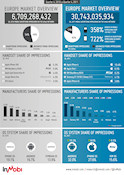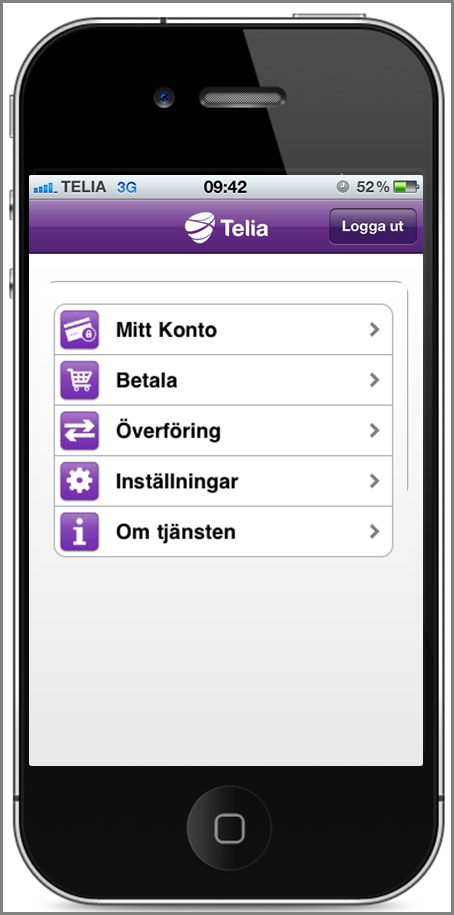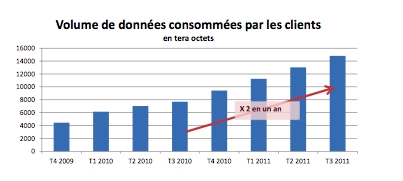Sony Ericsson (SE), whose Q4 results showed a loss of 247 million in the final quarter of 2011, has fared particularly badly in Western Europe. Overall, on a global basis, sales were down 16% year on year and 19% quarter on quarter. But in Western Europe Sony Ericsson’s sales were down 38% compared to 2010 ‘s fourth quarter. On a full year basis, sales were down 46% compared to 2010. And 2010’s figures were themselves 12% less than 2009’s sales.
A Sony Ericsson spokesperson pointed out to Mobile Europe that sequentially, from Q3 to Q4 201, sales were slightly up – but it’s hard not to determine an overall trend, despite that slight uplift in the final quarter. In 2010, Western Europe contributed 525, 668, 632 and 569 million euros in net sales on a quarter by quarter basis. Yet in 2011 those numbers were down to 303, 323, 313 and 355 million euros. So why is Sony Ericsson struggling in Western Europe in particular?
On its earnings call, SE said that the Q4 loss reflected intense competition and price erosion; macroeconomic issues affected consumer demand, which also impacted holiday sales. In addition, SE had no major product launches in Q4.
Francisco Jeronimo, IDC European Mobile Devices Research Manager, said that the manufacturer has had problems convincing operators to range large volumes of its phones.
“The main reason for that is that SE has failed to attract mobile operators with very interesting devices at affordable prices. The problem has been price – SE is not a brand that everyone recognises as a premium brand compared to Apple and Samsung. And though the devices are good they are not attractive enough to compete with HTC and Samsung on Android, and that’s reason that SE has become a Tier 2 supplier for most operators.”
Jeronimo added that SE’s financial results and perceived instability had also deterred operators. “Operators are not that keen to support the brand because they don’t want to have a lot of stock from a company that may go bust.”
Sony Ericsson said that in Western Europe in particular, it had held share between quarter three and quarter four “in Android”. It added that the region itself is suffering from financial and economical turmoil with fierce competition in these countries.
So with SE stuck in a declining spiral — it needs volume to decrease prices to operators, but it can’t lower prices without achieving volume — where will Sony go from here when it takes full control of the company?
Jeronimo’s view is that Sony must focus on differentiation, integrating its range of consumer assets, such as Playstation and TV, into the device experience. An entirely Sony-owned company could make a better job of integrating those assets than the JV did, he said. Although SE talked the talk of integrating Sony assets into devices, the JV tended to pull in different ways, Jeronimo said, and execution suffered as a result.
“Definitely Sony will improve brand awareness, but the key issue is achieving differentiation from Samsung, Apple and HTC, as even on Android Sony will not have volumes that will allow them to have competitive prices. This quarter is a very good sign that they will struggle if they don’t differentiate.
“They need to keep on with delivering to a niche segment — but with some services that others don’t have, such as replicating the PlayStation experience or allowing consumers to exchange information and media between the mobile device and the TV in a seamless way that others cannot replicate as easy as Sony. They need to create this UI that is unique to Sony products – that’s the only way they can succeed.”
Competing in this way will not be easy, however, as the likes of Google and Apple are also looking for full service integration. Samsung too, of course, has a wide range of consumer assets that it could bring to bear. That said, Jeronimo said he expects to see some interesting devices from Sony over the next year.
“They need to become a niche player at a premium level to become a profitable player again,” he said.









 hip with Vodafone has come at the perfect time as Amscreen continues to grow globally.”
hip with Vodafone has come at the perfect time as Amscreen continues to grow globally.”
Positive about advertising
Blyk is the mobile marketing and advertising company that started life as a standalone MVNO offering users free or subsidised service in return for agreeing to receive MMS and SMS advertising. That model changed a bit, and the company moved to working behind the scenes, in partnership with operators, and now it powers media offerings for Orange UK, T-Mobile UK, Vodafone Netherlands and Aircel.
Orange Brightstuff and T-Mobile You Choose (launched in November 2011) are two of the operator properties that Blyk runs. Today, Blyk said that it has increased its total number of supported subscribers from one million to four million over the past year.
Eric Kip, CEO of Blyk, told Mobile Europe that he wasn’t allowed to share where that growth had come from, but he could share a little bit more about how the company, which parted ways with one of its founders only in December, is helping its operator partners achieve results.
One finding Blyk liked is that Orange UK has seen a 35% improvement in its brand perception amongst customers receiving Blyk media. Kip said that Orange conducted its own survey of customers of its Brightstuff service, its opt-in marketing service powered by Blyk.
Customers receiving content and messages from Blyk had an improved perception of the Orange brand compared to other Orange users. Kip said this was not to do with pricing or tariffs, but to do with the value that Blyk delivers by delivering targeted messages. “My view is I think an operator becomes more of a value added service for customers than just a deliverer or supplier of voice, text and data. We add something of value that is really coming from the operator – and also build brand perception.”
Customers of Brightstuff can build a “totem pole” of what they like, choosing which sorts of messages they would like to receive. Blyk claims that this approach drives very high response rates. Kip said that the lowest response rate it achieves per message is “something like” 20%, with some campaigns achieving 50-65% response rates amongst users.
So does Kip think that this success rate could be expanded beyond Blyk’s core youth audience? Operators such as Telefonica and Telenor are setting up dedicated digital units that are likely to have opt-in and location based advertising form a key part of their portofolio. Could Blyk’s partners be in a position to expand Blyk’s reach top create their own enhanced digital media presence?
Kip confirmed that Blyk has moved from concentrating from the young (16-24) to the “young at heart”, and also that Blyk has received requests from other operators to look at specific groups, tailoring packages for groups that would be willing to receive specific types of packages. Certainly, there is increasing evidence that mobile advertising and marketing, from within an operator or from other networks, is on the increase.
InMobi and Buzz City both released quarterly metrics this week showing growth in European markets. For instance, ad impressions on Buzz City’s network from French mobile users grew 163% in Q4 2011. InMobi, meanwhile, claimed a 358% increase in European mobile ad impressions over the course of the last year. And there was an interesting nugget from Buzz City as well, who reckoned that “mature” (over 35!) users were driving much of that growth.
I think that’s interesting because, as mentioned, there is a clear drive amongst operators to open up their customer bases to media, marketing and advertising campaigns. Genuine opt-in campaigns, delivered to interested audiences, have the potential not just to boost revenues for operators, but to increase their own brand perception. Sloppy ones, of course, ruin it.
But if Blyk, Buzz City and InMobi are pointing us in the right direction the mobile marketing and advertising opportunity, for so long “next year’s big thing for operators”, may genuinely be approaching.
Keith Dyer
Editor
Mobile Europe